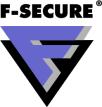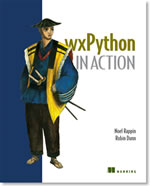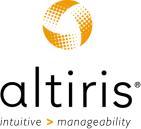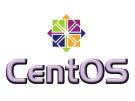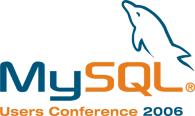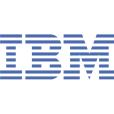President Slobodan Milosevic was found dead on his prison cell bed in a U.N. detention center in The Hague, Netherlands, where he was being tried before a U.N. war crimes tribunal. He was 64.
An official in the chief prosecutor's office said Milosevic's body was found at about 10 a.m. Saturday and he probably had been dead for several hours.
A Dutch medical team will conduct an autopsy Sunday, with a senior pathologist from the Serbian capital of Belgrade attending, a tribunal official told CNN.
Milosevic's death came just a few months shy of the expected completion of his marathon trial, which has lasted more than four years.
The fall of Slobodan Milošević Downfall of Presidency
Milošević recognized the opposition victories in some local elections, having contested the results for 11 weeks.
Constitutionally limited to two terms as Serbian president, on 23 July 1997, Milošević assumed the presidency of the Yugoslav Federation (currently Serbia and Montenegro). Armed actions by Albanian separatist groups and Serbian police and military counter-action in Serbia's previously autonomous (and 90% Albanian) province of Kosovo culminated in escalating warfare in 1998, NATO air strikes against the Federal Republic of Yugoslavia between March and June 1999, and finally a full withdrawal of all Yugoslav security forces from the province.
During the Kosovo War he was indicted on 27 May 1999, for alleged war crimes and crimes against humanity allegedly committed in Kosovo, and he was standing trial, up until his death, at the International Criminal Tribunal for the Former Yugoslavia, which he asserted was illegal, having been established in contravention of the UN-charter.
The Yugoslav constitution called for a two round election with all but the two leading candidates eliminated for the second round. Official results put Koštunica ahead of Milošević but at under 50%. Opinion polls suggested that supporters of most of the minor candidates would go to Milošević as would numbers of people who abstained in the first round but would oppose an opposition supported by the NATO powers.
Milošević's rejection of claims of a first-round opposition victory in new elections for the Federal presidency in September 2000 led to mass demonstrations in Belgrade on 5 October and the collapse of the regime's authority. Opposition-list leader Vojislav Koštunica finally took office as Yugoslav president on 6 October when Milošević publicly accepted defeat. Ironically, Milošević lost his grip on power by losing in elections which he scheduled prematurely (before the end of his mandate) and which he did not even need to win in order to retain power which was centred in the parliaments which his party and its associates controlled. This downfall is called the Bulldozer Revolution.
Following a recently issued warrant for his arrest by the Yugoslav authorities on charges for corruption/abuse of power, Milošević eventually surrendered to security forces on Saturday, 31 March 2001. On 28 June of the same year, Milošević was transfered by government officials from Yugoslavian to United Nations custody just inside Bosnian territory. He was then transported to the International Criminal Tribunal for the Former Yugoslavia, although the Constitution explicitly prohibited extradition of Yugoslav citizens. Koštunica formally opposed the transfer.
Trial
Following Milošević's transfer, the original charges of war crimes in Kosovo were upgraded by adding charges of genocide in Bosnia and war crimes in Croatia. On 30 January 2002, Milošević accused the war crimes tribunal of an "evil and hostile attack" against him. The trial began at The Hague on 12 February 2002, with Milošević defending himself while refusing to recognize the legality of the court's jurisdiction.
His popularity among the Serbs and Yugoslavs again rose sharply once the trial had begun, as his supporters see it as a travesty of justice and violation of national sovereignty.
Milošević had a team in Belgrade that helped him, often sending him information available from the secret police files. Serbian insiders often supported Milošević's point of view, while Bosnian and Croatian witnesses have offered a lot of testimonies supporting the indictments. The tribunal has to prove he had command responsibility in Croatia and Bosnia, at least de facto, since formally as a President of Serbia at the time he was not in charge. His influence may have gone beyond his formal duties, but there is little to no record of this.
Milošević was not considered by some contemporaries to be a radical nationalist himself (although some of his followers were). Milošević's rhetoric did not make use of hate speech.
At one point during the Yugoslav wars, Serbia had rejected further cooperation with the Croatian Serbs (the Republic of Serbian Krajina), and also with the Bosnian Serbs (the Republika Srpska, in 1993, when Serbia closed the border over the Drina river). After the Dayton Agreement in 1995, the Serbian nationalists (Vojislav Šešelj's radical party) became his sturdy opponents, up until 1998 when they joined his party in a coalition government.
The trial is still a controversial issue and has featured many conflicting and strange testimonies, which are viewed by all sides of the argument to support theories of cover-ups and dishonesty by the opposing parties. For example:
the statement by William Walker, the US former ambassador to El Salvador during its war, that he did not remember phoning several senior US officials to say that, at Racak, he had discovered a justification for a NATO war, but did not dispute that officials who said they had received his calls were telling the truth,
the testimony by General Wesley Clark that Milošević had come to him privately at a conference to admit to prior knowledge of the Srebrenica massacre and in the same evidence that NATO had no links to the KLA,
the statement by Rade Marković that a written statement he had made implicating Milošević had been extracted from him by ill-treatment legally amounting to torture by named NATO officers,
the statement by Lord Owen (author of the Vance Owen Plan) that Milošević was the only leader who had consistently supported peace and that any form of racism was personally "anathema" to him.
The prosecution took two years to present its case in the first part of the trial, where they covered the wars in Croatia, Bosnia and Kosovo. Throughout the two-year period, the trial was being closely followed by the publics of the involved former Yugoslav republics as it covered various notable events from the war and included several high-profile witnesses.
Milošević got increasingly ill during this time (high blood pressure and severe flu), which caused intermissions and prolongued the trial by at least six months. In early 2004, when he finally appeared in court in order to start presenting his defense (announcing over 1,200 witnesses), the two ICTY judges decided to appoint him two defense lawyers in accordance with the medical opinions of the resident cardiologists. This action was opposed by Milošević himself and the pair of British lawyers appointed to him.
In October 2004, the trial was resumed after being suspended for a month to allow counsel Steven Kay, who complained Milošević was not cooperating, to prepare the defense. Steven Kay has since asked to be allowed to resign from his court appointed position, complaining that of the 1200 witnesses he has only been able to get five to testify. Many of the other witnesses refused to testify in protest of ICTYs decision not to permit Milošević to defend himself.
In November 2004, former Soviet Premier Nikolai Ryzhkov became the first high profile witness to testify for the defence.
If a prima facie case for either claim were established, the ICTY would be legally obliged under its terms of reference to prepare an indictment against the leaders of most of the NATO countries, even though the Prosecutor already concluded an "inquiry" against the NATO leaders.
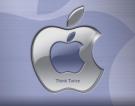 Apple's share of the worldwide PC market has tumbled from 4.6 percent in 1996, the year before Jobs returned, to just 2.2 percent in 2005... Gartner puts Apple's 1996 share at 4.6 percent, IDC at 5.1 percent. Market share in 2005 was 2.2 percent from Gartner and 2.3 percent from IDC... Apple's market share peaked at 15.8 percent in 1980
Apple's share of the worldwide PC market has tumbled from 4.6 percent in 1996, the year before Jobs returned, to just 2.2 percent in 2005... Gartner puts Apple's 1996 share at 4.6 percent, IDC at 5.1 percent. Market share in 2005 was 2.2 percent from Gartner and 2.3 percent from IDC... Apple's market share peaked at 15.8 percent in 1980
